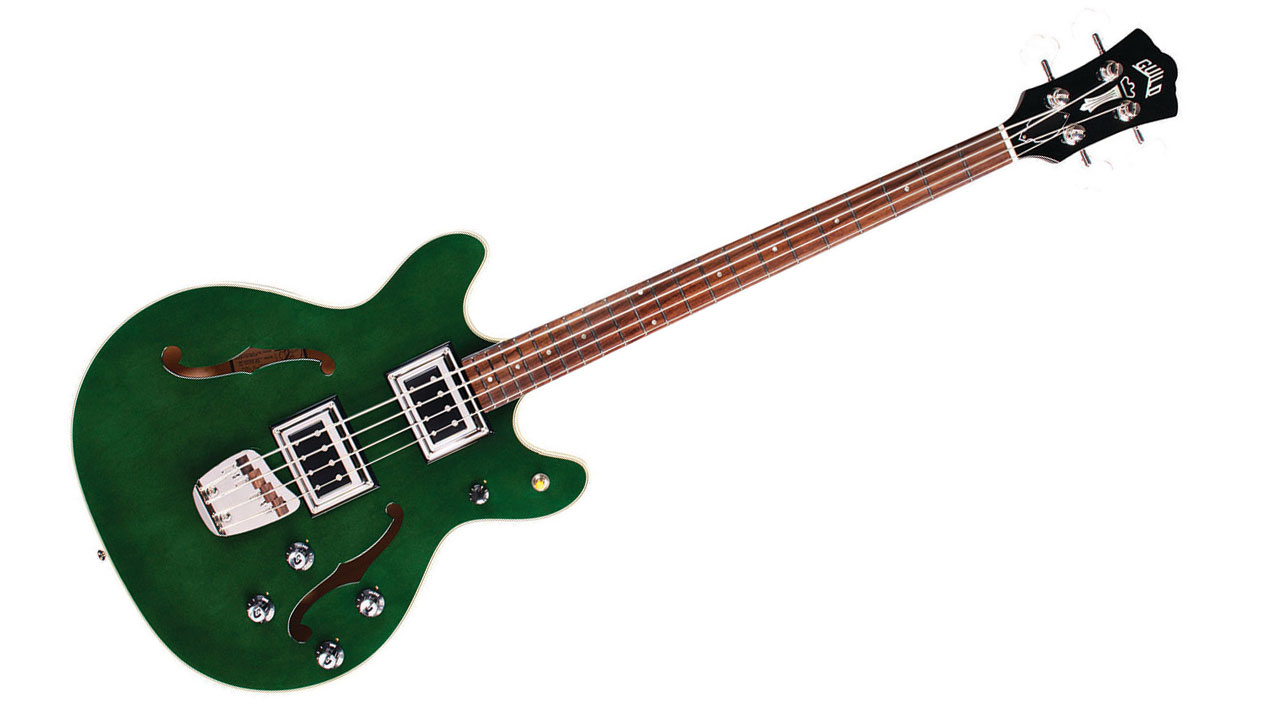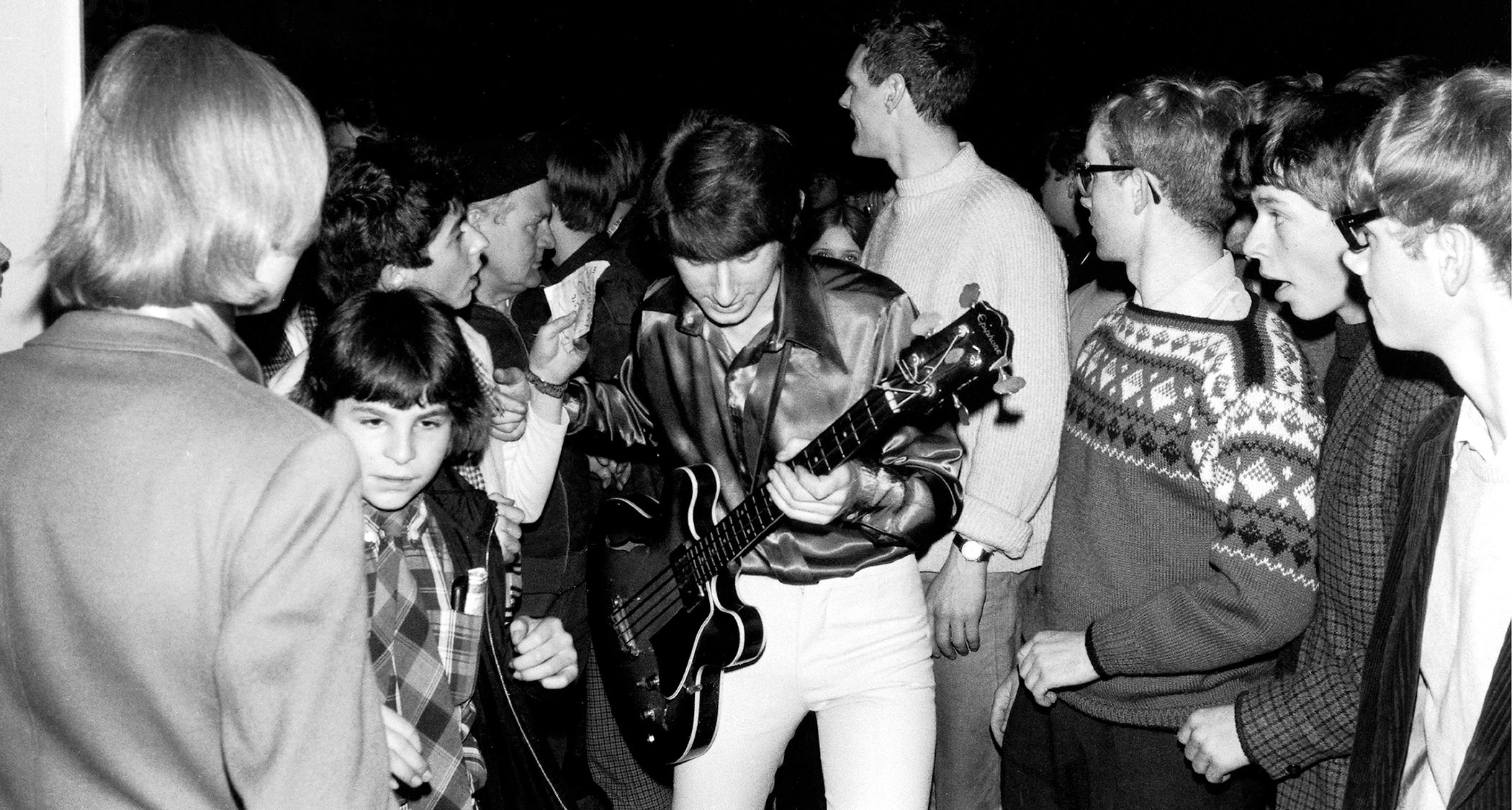Guitar World Verdict
A reissue worthy of the legend.
Pros
- +
Beautiful recreation of a classic
Cons
- -
D’Addario strings should be flatwounds
You can trust Guitar World
In the realm of all things bass, there’s a strong contingent of “semi-hollow Earth” people—those who believe the ultimate expression of electric bass comes in the short-scale, semi-hollow form factor.
Seen by some as a throwback to the early years of electric music, the semi-hollow bass has returned to popularity many times since the late 1950s, spurring some companies to innovate with the platform, and others to reissue old classics.
The original Guild Starfire Bass II was introduced in 1967, at the height of the psychedelic rock era, and the bass found its way into the hands of two of the scene’s most prominent players: Jefferson Airplane’s Jack Casady and the Grateful Dead’s Phil Lesh.
The instrument’s wide frequency response drew these two players to the Starfire, and they both exploited its wider tonal palette, finding it to be the perfect launchpad for their early experiments in active electronics (which led to the founding of Alembic, the first boutique bass company.)
The new Guild Newark St. Collection Starfire Bass II is a faithful replica of the instrument in one of its most popular iterations, featuring dual BiSonic pickups. Originally developed by Sweden’s Hagstrom Guitars, the BiSonic pickup made its way into the Starfire Bass initially as a single pickup placed in the bridge position. I had the chance to review Guild’s single-pickup reissue in 2014 for BP’s roundup of short-scale semi-hollowbody basses.
I found it exceptionally well built, and tonally, what you might expect from a single pickup in that location: pointy and articulate, although not exactly bottom-heavy. In that review, I publicly lamented the absence of the two-pickup version, and perhaps they heard my plea (along with thousands of other diehard Starfire fans).
The two-pickup reissue of the Starfire Bass II is a symphony in mahogany with arched laminate top, sides, and back. Two thirds of the three-piece neck are made of the legendary tonewood. The ivory-colored binding and black/white purfling give the Starfire Bass II a classic semi-hollow look, while the unique Guild bridge plate has an Art-Deco flair that contrasts the rosewood bridge saddles’ rustic-but-functional vibe.
All the latest guitar news, interviews, lessons, reviews, deals and more, direct to your inbox!
The slim, rounded neck profile feels great in your hand at a variety of strap heights; if you’re used to a Fender-shaped object, you may have to experiment to find a comfortable position for this style of instrument. I find hanging it lower helps with neck dive and makes it more comfy where my right arm crosses the body binding.
The Starfire Bass II gives you individual volume and tone controls, master volume, and a 3-way toggle switch, allowing for several pickup-blend strategies. The cloverleaf-shaped Grover Vintage 142 series tuners matched with the iconic Guild headstock give the Starfire Bass II the retro look that fans of this axe drool over.
It’s available in a classic natural finish (that shows off the beauty of the mahogany), cherry red, black, or like the review sample, a gorgeous emerald green. It also comes in a flame-maple body.
The test model came with roundwound strings, which wouldn’t be my preference, but time constraints didn’t permit swapping them out. I’d go for a warm, soft flatwound string like Thomastik-Infeld Jazz Flats, or Pyramid Golds, but the rounds let me explore a different character of the instrument and experience the BiSonic pickups’ full timbral range.
The BiSonics have a very complex and direct tone: The attack is punchy and clear, with a warm, rounded bottom end. The high-end response gives the tone a subtle sheen—icing on the cake, if you will. It’s not overtly bright, but the detail is there for fingerstyle that doesn’t get lost in the mix, or for bringing out the click with a pickstyle approach. (This crystal-like effect would also serve the instrument well when equipped with darker flatwound strings.)
When soloed, the neck-position pickup gives a big, wide tone that can ably fill out the bottom, but with enough detail to keep it from getting muddy. Dialing up fat textures suitable for reggae, blues or country is easy, and the range of the tone control gives you plenty of useful options. The bridge pickup alone gives us a tighter response with lots of detail. It’s a tone that would be useful for solos and chords, but would require serious low-end boosting at the amp, if you wanted to drive the bus from back there.
The magic happens when you blend the two pickups and get a well-balanced tone that checks all the boxes. Of course, it’s not just about the pickups: The combined influences of the centerblock and hollow chambers give this type of axe a distinctly different note texture than a solidbody, while the BiSonics give the Starfire Bass II its own voice.
The new Starfire Bass II will satisfy longtime fans of the instrument, and its signature tone is a welcome addition to the cadre of short-scale semi-hollow basses on the market.
- Best bass guitars: top 4-string and 5-string bass guitars for all budgets
Specifications
Street $1,300
Construction Set neck
Body Semi-hollow, arched top, laminated mahogany
Neck Three-piece mahogany/maple/mahogany
Fingerboard Indian rosewood
Fingerboard radius 12"
Frets 21 narrow jumbo
Nut Bone
Scale length 30 3/4"
Neck width at nut 1 11/16"
Pickups 2 Guild BS-1 BiSonic Bass single-coil
Hardware Nickel plated
Weight 9 lbs
Made in Korea

